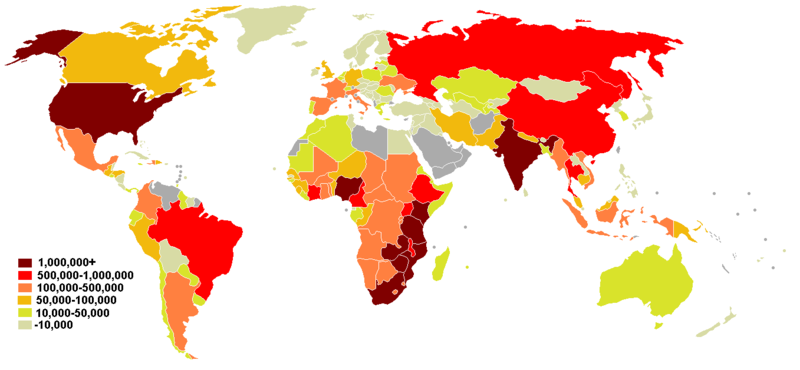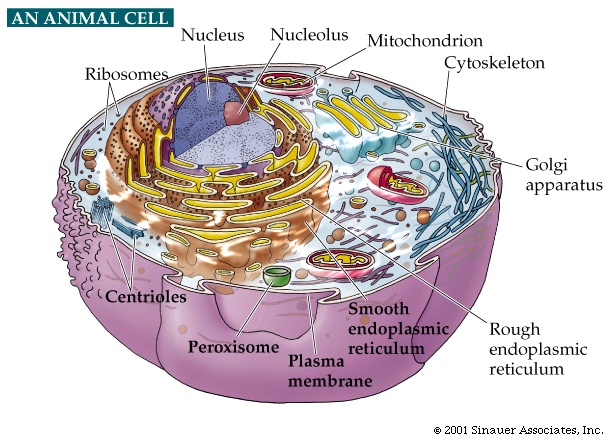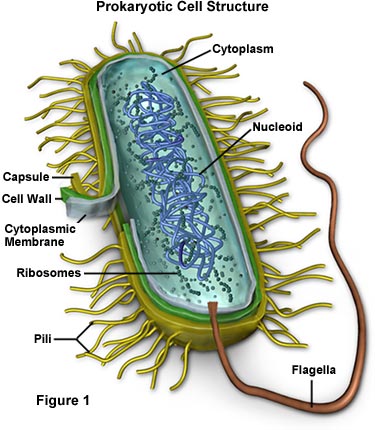(Chapters 5,6,7)Cardiovascular System (pages 86-102)
Blood, Cellular Respiration, and Oxygen
(Powerpoint, pages 105-118, Sickle Cell Anemia Case Study site)
Immunity and Microbes (pages 121-140)
____________________________________________________________________
Cardiovascular System and Blood
The cardiovascular system includes the heart and blood vessels. The heart pumps blood and blood vessels move blood to and from the capillaries. The cappillaries are where the exchange of nutrients for waste takes place with tissue cells. Blood is refreshed at the lungs , where gas exchange occurs, at the digestive tract, where nutrients enter the blood, and the kidney, where wastes are removed from the blood. (page 102)
A. Blood Vessels
1. Arteries (and arterioles)
a. take blood away from the heart
b. have thick walls to withstand blood pressure
2. Capillaries
3. Veins (and venules)
a. take blood to the heart
b. relatively weak walls with valves to keep blood flowing in one direction

The heart has a right and left side--each containing an atrium and ventricle. The right side pumps blood through the lungs. It also receives blood from all veins in the body. While blood circulates through the left side of the body, the left side delivers oxygen and nutrients to tissue through the arteries and picks up carbon dioxide through the veins. Valves keep the blood flow in the correct direction.
(http://www.learnaboutbypass.com/hrtchmbrs.gif)
B. Features of the Cardiovascular System
1. Pulse-pulse rate indicates the heartbeat rate
2. Blood Pressure- moves blood in arteries (the beating of the heart = flow of blood)
3. Capillary Blood Flow- slow to aid in exchange of nutrients and wastes in the tissues
4. Venous Blood Flow- returns blood to the heart (caused by skeletal muscle contraction, valves, and respiratory movements)
C. Cardiovascular Circuits
1. Pulmonary- blood travels to and from lungs (exchange of gases)
2. Systemic - aorta divides into blood vessels that serve body's organs and cells (exchange with tissue fluid)

Both systems are shown in the diagram to the left. Also, more extensive information regarding each can be viewed at the following website:
Pulmonary and Systemic Circulation
Cappilary exchange is explained in detail in the next YouTube video series.
Cardiovascular disease is the leading cause of death in Western countries.
Hypertension and atheroscelerosis can lead to stroke, heart attack, or aneurysm.
Following a healthy diet, exercising, and not smoking help prevent cardiovascular disease.Atheroscelerosis is an accumulation of soft masses of fatty materials (including cholesterol) beneath the inner linings of arteries. These deposits are called plaque. Recently,
Tim Russet from NBC's Meet the Press died from ruptured cholesterol plaque
.Blood, Cellular Respiration, and OxygenCells need oxygen for cellular respiration to occur. Cellular respiration breaks down glucose to create ATPs for use during cell metabolic reactions. A detailed explanation of the process can be found at the following site:
http://biology.clc.uc.edu/Courses/bio104/cellresp.htmBe sure to check out the song at the top of the page!
BloodFunctions help maintain homeostasis1. transports hormones, oxygen, nutrients to cells
2. transports carbon dioxide and other wastes from cells
3. fights infections and has various regulatory duties
4. maintains blood pressure
5. regulates body temperature
6. keeps pH of body fluids within normal limits
ComponentsA. Formed Elements1. Red Blood Cells (transport of oxygen)
2. White Blood Cells (defense against disease)
3. Platelets (blood clotting)

When an injury causes a blood vessel wall to break, platelets are activated. They change shape from round to spiny, stick to the broken vessel wall and each other, and begin to plug the break. They also interact with other blood proteins to form fibrin. Fibrin strands form a net that entraps more platelets and blood cells, producing a clot that plugs the break. (web source)
B. Plasma1. 91% of plasma is water
2. plasma proteins are mostly produced by the liver
3. plasma proteins maintain osmotic pressure, regulate pH, and transport molecules
Determining blood type is necessary for transfusions so agglutination (or clumping) of red blood cells does not happen. Sickle Cell Anemia
Sickled cells lead to the malfunction of several systems (liver, lungs, kidneys), and usually result in early death. Other symptoms of sickle cell anemia include shortness of breath and poor tissue development. Normal red blood cells have a concave shape on both sides, along with high oxygen concentration. A sickled cell has low oxygen conentration and changes shape into what is refered to as sickled. The image below shows normal red blood cells to the left, and a sickled cell to the right. The bizarre shape of sickled cells prevents blood from delivering the necessary oxygen and nutrients.

(
http://www.nslc.wustl.edu/sicklecell/part1/background.html)
Hemoglobin is responsible for transporting oxygen from the lungs to the rest of the body. If this transport does not occur, as in the case of sickle cell anemia, the consequence is carbon dioxide and waste build-up.
Immunity and MicrobesMicrobes
include bacteria and viruses. These perform services of value, but also cause disease. Bacteria cause disease by multiplying in hosts and producing toxins. Viruses take over the host in order to reproduce and can cause new diseases in the process that the human body has a hard time fighting.
Immunity is the ability to fight diseases and cancer and includes lines of defense. There are two types of defenses; nonspecific and specific.
A. Nonspecific Defenses1. Barriers to Entry
a. skin and mucous membranes
b. chemical bacterias (lysozyme in perspiration, syliva, and tears, also stomach acid)
c. resident bacteria (normal flora)
2. Inflammatory Reaction (involves phagoctyic, neutrophils and macrophages)
3. Protective Proteins
B. Specific Defenses1. B Cells and Antibody-Mediated Immunity
a. produced and matured in bone marrow
b. directly recognize antigen (molecules that are foreign to the body) and undergo
clonal selectionc. Clonal expansion results in antibody-secreting plasma cells and memory B cells
2. T Cells and Cell-Mediated Immunity
a. Cell-mediated immunity against virus-infected cells and cancer cells
b. produced in bone marrow, mature in thymus (gland underneath top of breastbone)
c. secrete cytokines (chemicals that enhance response of all types of immune cells) for control
Aquired Immunity1. Long lived/active immunity can be induced by vaccines
2. Short lived/passive immunity is needed when a person is dealing with infectious disease
AIDS (Aquired Immune Deficiency Syndrome)AIDS is caused by HIV (Human Immunodeficiency Virus). The condition reduces the function of the immune system and leaves people unable to fight off infections or tumors. Treatment can slow down the disease, but at this point there is no known cure for AIDS. Medicine is not always available in highly affected areas, such as Africa, where HIV is suspect to have originated.

<
This world map shows the amount of people living with AIDS per country as of 2008. (source: wikipedia.com)
Being HIV-positive, or having HIV disease, is not the same as having AIDS. Many people are HIV-positive but don't get sick for many years. As HIV disease continues, it slowly wears down the immune system. Viruses, parasites, fungi and bacteria that usually don't cause any problems can make you very sick if your immune system is damaged. (http://www.aids.org/factSheets/101-what-is-aids.html) This website contains detailed information and links to numerous fact sheets with statistics on AIDS.

































 (Levels of Biological Organization;
(Levels of Biological Organization; 







